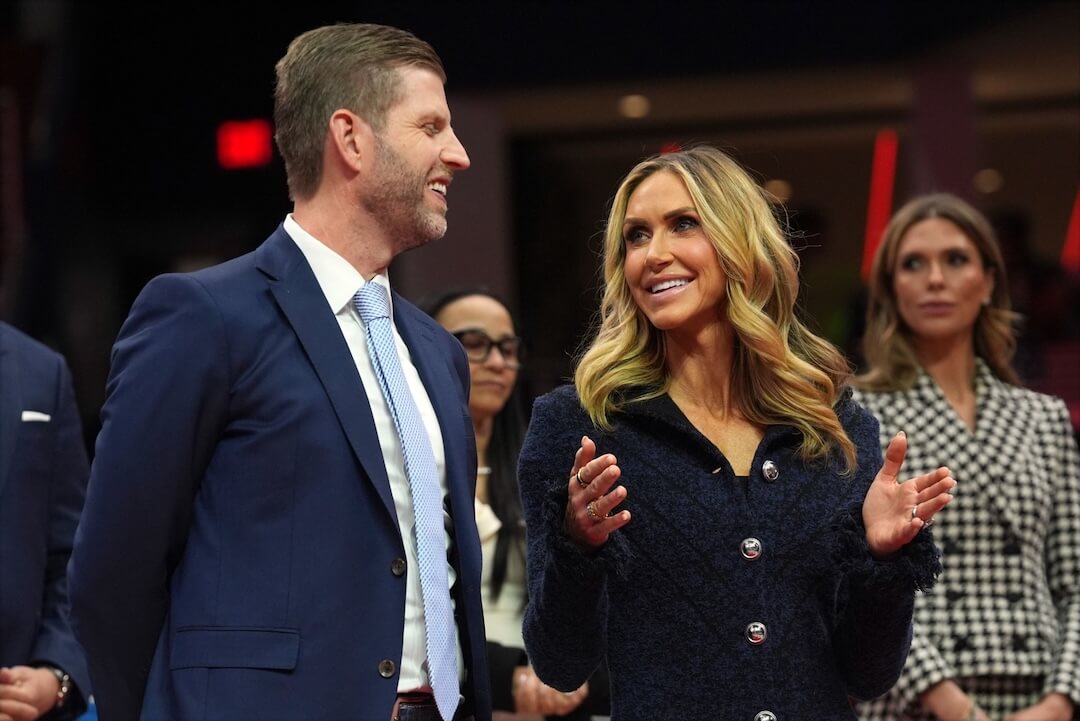Craig Altemose knows it sounds a little smug. But the Eckerd College senior figures if his media consumption were food, he’d come off looking like Julia Child.
In the morning, the 21-year-old international relations major sifts through electronic versions of The New York Times and Christian Science Monitor newspapers, which are e-mailed to him daily. Then, he’ll root around a few other Web sites to pick up on notable international news, such as the British Broadcasting Corp. or Radio Free Europe.
During the day, he might check cable news channels or the campus newspaper, the Triton, where he writes a weekly column on campus events as student body president. At night, there’s a sampling of edgy animated comedies such as “South Park” or “Family Guy.”
And then, at 11 p.m. every Monday through Thursday, Altemose and five or six friends crowd in front of his suite’s TV set for their favorite group viewing: Comedy Central’s newscast spoofs “The Daily Show” and “The Colbert Report.”
“I think I’ve got a pretty well-balanced, healthy (media) diet,” said the student, a New Jersey transplant who admitted his big Achilles heel is a lack of local news consumption. “When you watch TV, they pick what they think is important. In the newspaper or (on the) Internet, you can pick the topics … You’re much more in control.”
Schoolmate Sheena Bacon has a decidedly different routine, spending much more of her media time checking e-mails from friends and surfing to Web sites by favorite retailers such as Old Navy or Lane Bryant. A 22-year-old biology major with a job at Walgreens and plans for medical school, Bacon knows her media diet of e-mail, the woman-centered Lifetime cable channel and her boyfriend’s sports shows on ESPN may not be the most refined fare, but it meets her informational needs.
“Between work, classes, volunteering and all that, my time is pretty thin,” she said. “I’ve got to focus on what works.”
When it comes to gauging the impact of media consumption in your life, some experts suggest viewing the sources you access the same way you might view foods in a diet. And whether your tastes lean from The New York Times to NASCAR, there’s one word they propose you keep in mind:
Balance.
“A media diet is very much like a real diet … mix the different food groups,” said Dietram Scheufele, a professor in the school of journalism and mass communication at the University of Wisconsin at Madison. “Nobody says you shouldn’t ever eat sugar or ice cream, and nobody says you should eat raw spinach every day. News is one of the most important functions and there’s entertainment … but the two tend to be blurred together more often.”
People are awash in media these days, with one recent study showing the average American spends nine hours a day consuming media — using up more minutes operating media-related devices (cell phones, radio, TV, etc.) than on any other waking activity.
A study by the Kaiser Family Foundation found that children age 6 and younger spend an average two hours per day with screen media (TV, computers) — the same amount of time they spend playing outside and three times the amount of time they spend reading or being read to.
Whereas people spend lots of effort monitoring the food they eat and its affect on their health, media users may not spend nearly as much time thinking about their diet.
“We have a lot of information about how many calories you can consume to be healthy … but in terms of the effect of media on people’s social growth, we know a lot less,” said Douglas Levin, director of education policy for Cable in the Classroom, a foundation created by the cable industry.
For years, researchers have suggested a link between excessive TV viewing and obesity, and a connection between violence depicted in TV shows or video games and decreased sensitivity to real violence. The American Academy of Pediatrics recommends no TV for children age 2 and younger; no more than two hours daily of nonviolent, educational programs for older children.
“From our perspective, for the amount of time you use media, (we ask) “How can you use it to improve your education or well-being?’ ” said Levin, who recommends parents consider overall patterns of media use the same way they might plan family meals. “One of the other trends we’re seeing, particularly among youth, is … they are passionate users of and creators of media, too. And so much of the impact of media is how it’s used.”

Mohamed Ghabour, a neonatologist at Brandon Hospital, can cite a daily media diet that includes a breakfast of morning news headlines on CNN, lunch with international news stories via Web sites for the BBC or newspapers in his native Egypt and a nightcap of e-mail bulletins from the Council for American Islamic Relations or a good movie on TV.
“The brain should be respected more than the stomach … We all think about food and plan for food, but do we plan for media?” Ghabour said. “For me, I would like to learn more every day. I think I need more depth … (sources) that would be enriching my mind, culturally.”
At the Project for Excellence in Journalism, director Tom Rosenstiel encourages others to see their media diet as a question of time management: With a finite number of hours in a day, and a huge number of media sources available, where will you spend your time? And to what result?
“Power is shifting from the journalist setting the agenda, to the consumer becoming their own editor — deciding what their media diet will be,” Rosenstiel said. “We’re in the fast food news culture, where you’ve got a huge buffet. (And) we do almost nothing in the media world to teach people what they need to know to be an intelligent consumer of news.”
Scheufele, who has conducted a number of studies on the impact of media consumption on individuals, draws a clear distinction between news coverage and entertainment programming in his diet analogy — attributing more healthy qualities to news programming.
In his world, traditional news outlets such as The New York Times, Economist magazine or local newspapers are the bran-based roughage of the media smorgasbord, filled with balanced, factual takes on a wide range of news events.
In one of his best-known studies, Scheufele directed a poll of nearly 800 residents near Cornell University while teaching there in October and November 2001, asking respondents how they learned about the 9/11 terrorists attacks and their attitudes toward civil liberties issues.
He said those who mostly got their news from TV absorbed a mostly one-sided, emotional message. This material led them to support expanded police powers (racial profiling of suspected terrorists in airports and other public spaces, for instance) and expanded government power to gather information (monitoring a subject’s library and Internet usage), regardless of their views before the attacks.
“Newspapers are the one medium which force you to see the widest possible viewpoint, with (diverse) op-ed articles and balanced stories,” said Scheufele, who added that other studies have found those who read newspapers tend to have more civic involvement — voting, making political contributions and displaying candidate signs in their yards more often, for example.
Whereas people spend lots of effort monitoring the food they eat and its affect on their health, media users may not spend nearly as much time thinking about their diet.Scheufele remains disdainful of media sources which too often tell consumers what they want to hear, from Rush Limbaugh’s conservative radio show to the liberal radio network Air America and topic-selected lists of news stories online. “The Internet has perfected the art of tailoring our news (intake) to our own biases and preferences,” the professor said. “I no longer see stories which I don’t like, or which make me think differently.”
He suggested consumers take in as much information as possible, taking care to utilize as many sources as possible. “While all (media outlets) individually have their problems, it’s the combination of all of them which is key,” Scheufele said. “TV is like greasy food; I have burgers and french fries every so often. But I wouldn’t be surprised to weigh 400 pounds if I ate that every day.”
Of course, it is convenient for a newspaper’s media critic to advocate reading newspapers over TV or Internet sites. Still, Rosenstiel, at the Project for Excellence in Journalism, noted that thanks to downsizing at local TV and radio stations, regional and local newspapers may be the best source for information about local communities.
“We have more reporters than ever covering fewer stories,” he said. “Everybody will have the latest on what President Bush said about Iraq, but the number of news outlets covering what may be going on in a local community may actually be smaller than 30 years ago.”
But not everyone buys the simple analysis of print equals good, Internet and TV equals bad.
Author Steven Johnson built a book around the notion that complex video games, Internet technology and modern-day TV hits such as “The Sopranos” and “Survivor” can teach users expanded problem-solving skills and new ways of thinking. In Johnson’s “Everything Bad is Good for You,” he connects the complex narrative structure of today’s TV series to heightened average IQ scores and higher emotional intelligence.
Ball State University professor Bob Papper — whose in-depth survey analyzing 5,000 hours of media use among 400 subjects continues to yield results — agreed that dismissing whole segments of media as inherently unhealthy may be misleading.
“The problem with establishing a (media) diet … (is that) even to say news consumption is good while entertainment is bad, why is that even true?” Papper said.
“Some newscasts do a good job, others are clueless … Some entertainment shows give us insights into human beings, others appeal to our worst instincts,” he said. “And reading the (newspaper) sports section might make you more informed about sports, but does it make you a better citizen?”
Other results from Papper’s data:
- Well aware that TV consumption is considered negative, subjects underestimated their own viewing by nearly 50 percent when asked how much they watched television.
- “A huge number of people said they read the newspaper when they didn’t, and computer use was very much overestimated,” Papper said. “Basically, they’re using the computer more, they’re not using TV less.”
- Rather than get their news online, most young people are not getting news at all, using the Internet for other purposes.
- People rarely believe their own media consumption habits are unhealthy, regardless of what they actually are. “Few people say, “I don’t want to watch the crap that I’m watching.’ … People think it’s the stuff other people watch that’s the problem,” Papper said.
“I’m afraid we probably do consume media the way we consume food,” he added. “We know a lot of what we gorge on in the media is entertainment, as well as killing time. We know we should be more enriched and better informed. But for most of us, that will only take us so far.”
This story was originally published by the St. Petersburg Times and is reprinted with permission.
Eric Deggans can be reached at 727 893-8521 or deggans@sptimes.com. See his blog at www.sptimesphotos.com/blogs/media.





